Dear Vilde
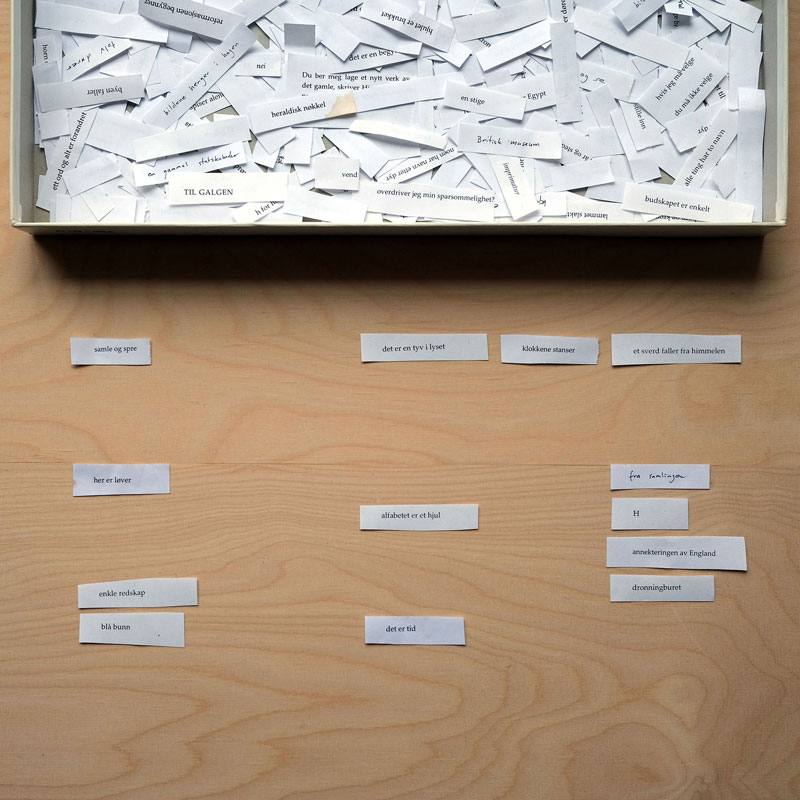
Oslo, 7 February 2022
Dear Vilde,
[…] I begin with a few words, a line. This, for example:
gather and disperse
I can’t remember where it comes from. Maybe military theory, troop formation. […] It is both an imperative and a description of how I work. I collect words and phrases, I write them down on small bits of paper and spread them out on the table. I move them around, I try out different combinations, I place them below each other, next to each other, I gather them in sections, and at some point I might have written a small book. I have written all the books for England Forlag [England Press] this way, and two books for the Swedish small press Chateaux. […]
I have published two larger collections, Dronning av England [Queen of England] and Britisk museum [British Museum], both with Kolon Forlag. The process is the same, only with larger units. I spread out small books on the floor, and images and letters and other texts, and move them around. […]
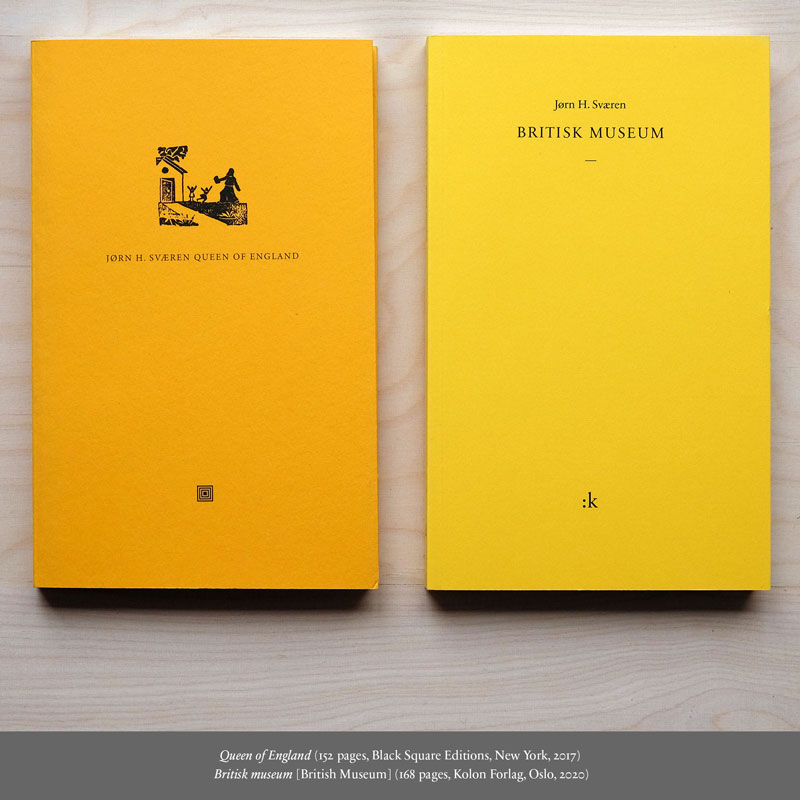
Sometimes I publish a few lines in magazines, perhaps lines that have not yet found their place in a book. These two lines, for example, were first published in Swedish, on the same page in the magazine Slot:
a child carries a child
why is it beautiful
They were later printed on separate spreads in the book Klokkene [The Clocks], as the first of its three parts. I always place the lines on right-hand pages and leave the versos, the left-hand pages, blank. The lines are isolated, and the eye can rest, while the thoughts wander. […]
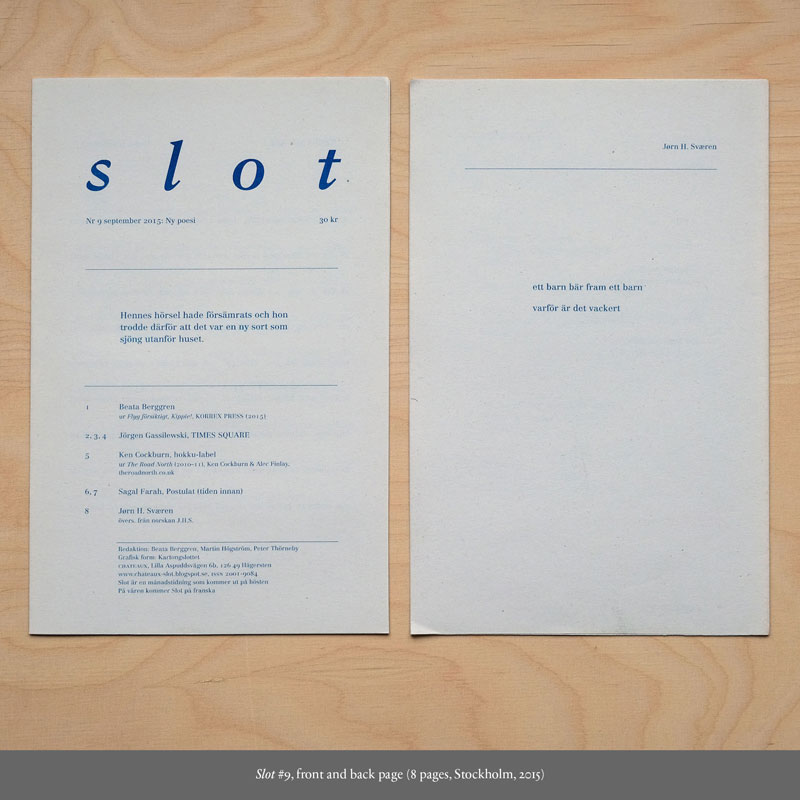
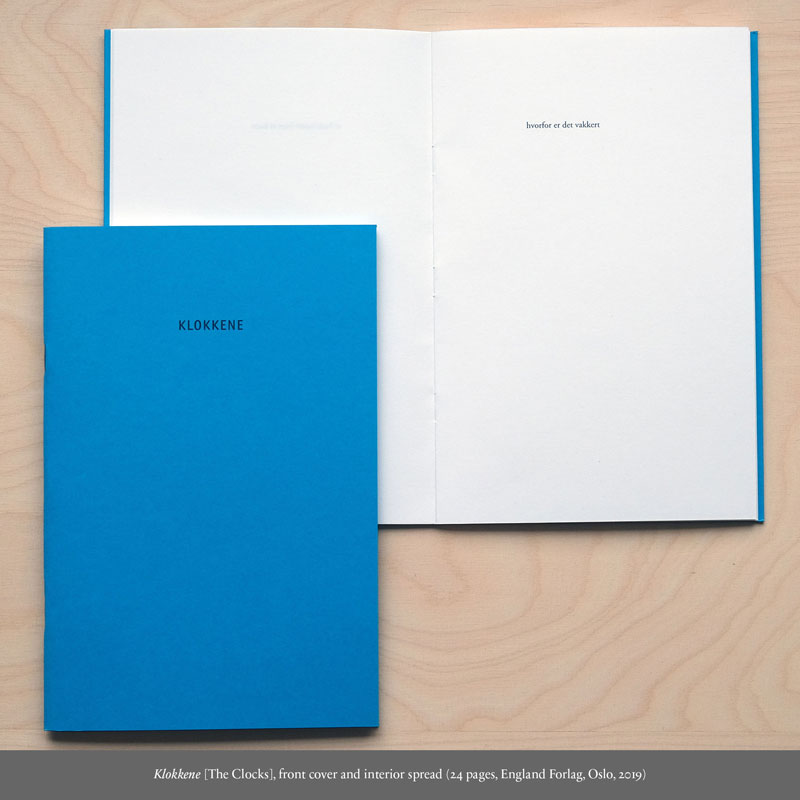
Sometimes I pick out a few lines from a book and publish them as an independent text. The finished work doesn’t exist. These two lines, for example, are printed on separate spreads in the book Tre bøker [Three Books], as the last of its three parts:
the great words
forgive them
They were first published as an independent text in French, in the magazine Pension Victoria, and then in Norwegian in the anthology Gruppe 10 [Group 10], like this:
THE GREAT WORDS
forgive them
Note the capital letters—the big words, quite simply—the first line is now a title. I’m thinking about what it does to the two lines. […]
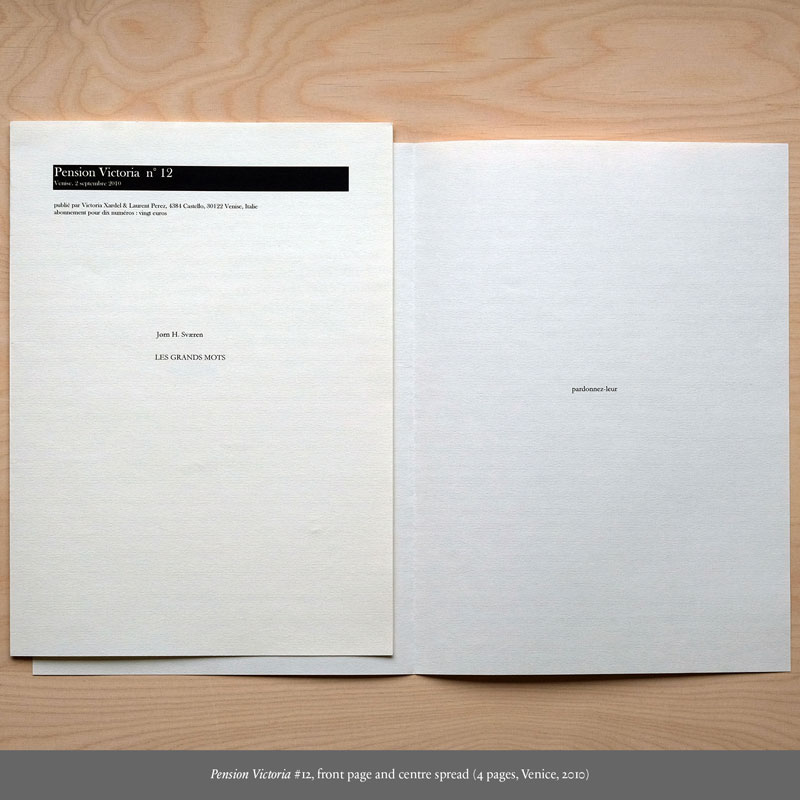
Some lines might stand best on their own. This, for example:
the mills of poetry grind slowly
I have printed it on writing paper, postcards, stickers. This line I have only printed on place cards:
the reformation begins
[…] The place cards can be used to write with, the lines can be moved around and combined in many ways. The postcards too, for that matter, if the table is big enough. […]
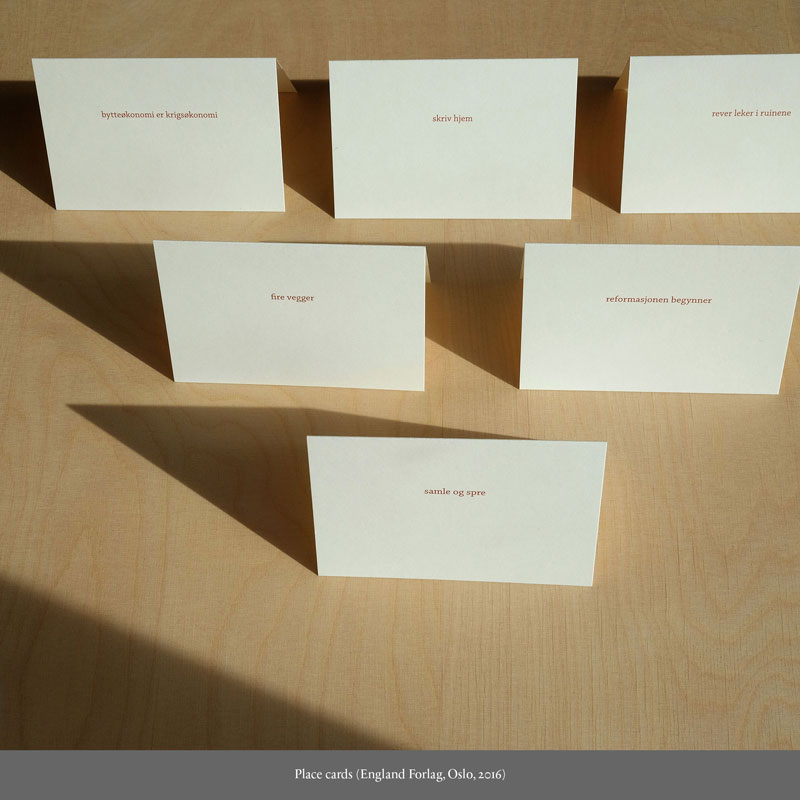
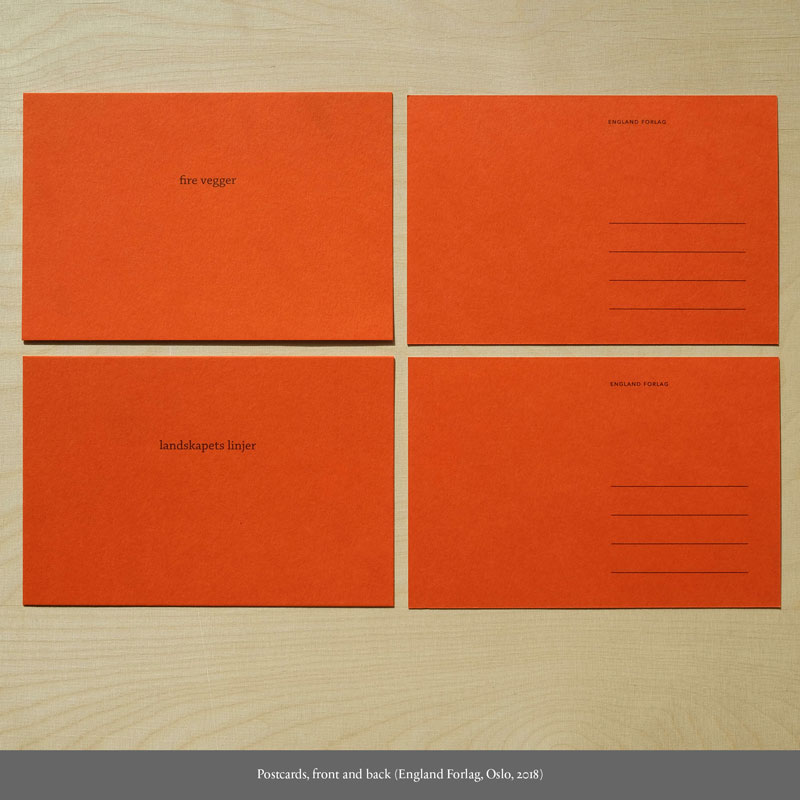
I have also printed books with only one line, in addition to a title. London, for example, with this line:
a paper boat is burning on the river
I have called it a work instruction, and I have set paper boats aflame and afloat on rivers, but never on the Thames.
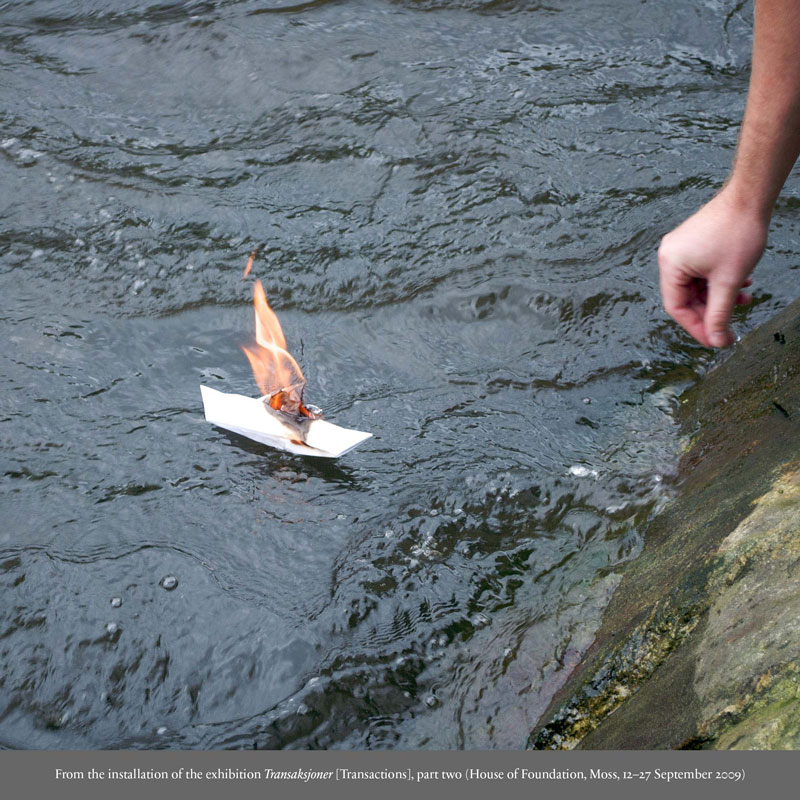
Håndtak [Handle] is another example, with this line:
a handle in the shape of a leaping stag
This could also be a work instruction, someone could make or could have made such a handle. My starting point was not a thing, but an example in a dictionary:
a door handle shaped as a lion’s head
[…] I often rewrite, as above. The sources are often old, and they can be more or less obvious—‘the mills of poetry grind slowly’, for example, is a rephrasing of an old proverb, ‘the mills of God grind slowly’, of unknown origin. Other lines are direct quotations, although they might not come across as such—‘forgive them’, for example, is a quote from Jesus on the cross (Luke 23:34). […]
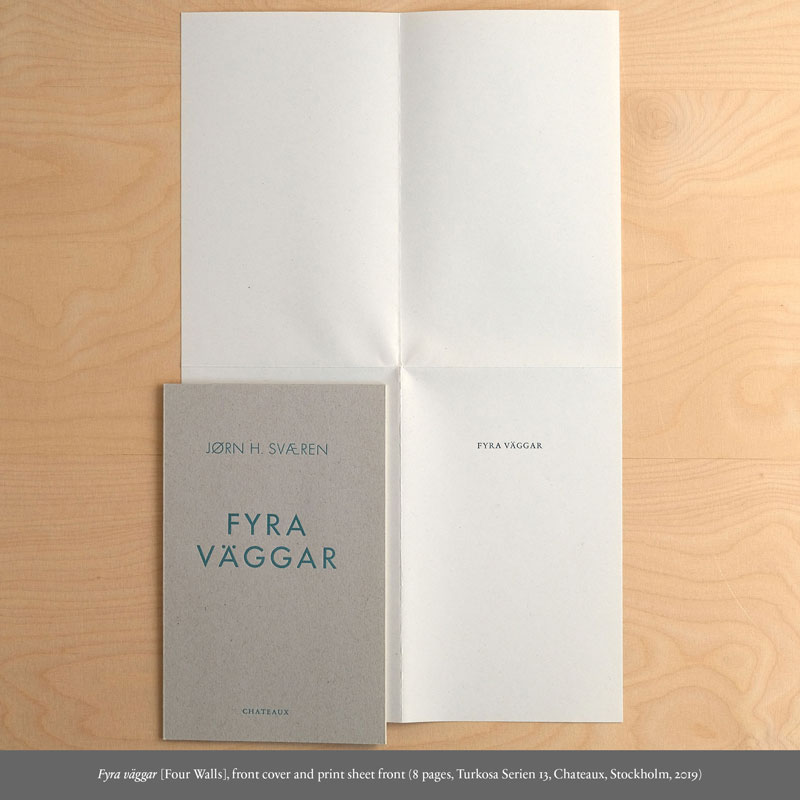
Fire vegger [Four walls] is a third example, with this line:
the images are hanging in the garden
The title line has accompanied me for a long time. I first printed it on place cards, then on large sheets for an exhibition, then postcards, until it eventually ended up as the title of my second book for the Swedish small press Chateaux. I have written two books for their turquoise series, a book series with a strict material and formal framework. The starting point is the print sheet, 25 x 40 cm, folded twice, into an uncut eight page book.
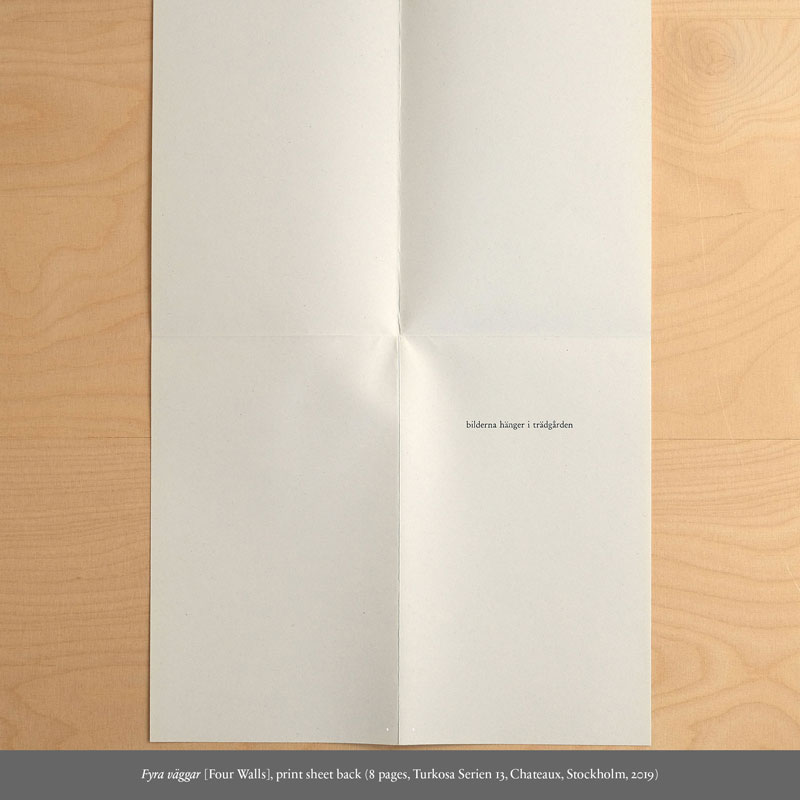
I translated the book into Swedish to avoid confusion, I want the lines to be as clear and direct as possible. My first book in the same series, Det ferdige verkets skjønnhet [The Beauty of the Finished Work], is easily understood by Swedish readers and hence not translated. I translated the first book into French, and Andreas Vermehren Holm translated it into Danish. The Danish edition is an ordinary saddle-stitched book published in the series Bestiarium by the small press Virkelig. The French edition is a print sheet without cover published by Victoria Xardel as a supplement to the magazine L’usage. I mention these two, Andreas and Victoria, because their work is important to me. I have never met Victoria, but we have corresponded for a long time, and I always think of her when I sit down with my bits of paper. […]
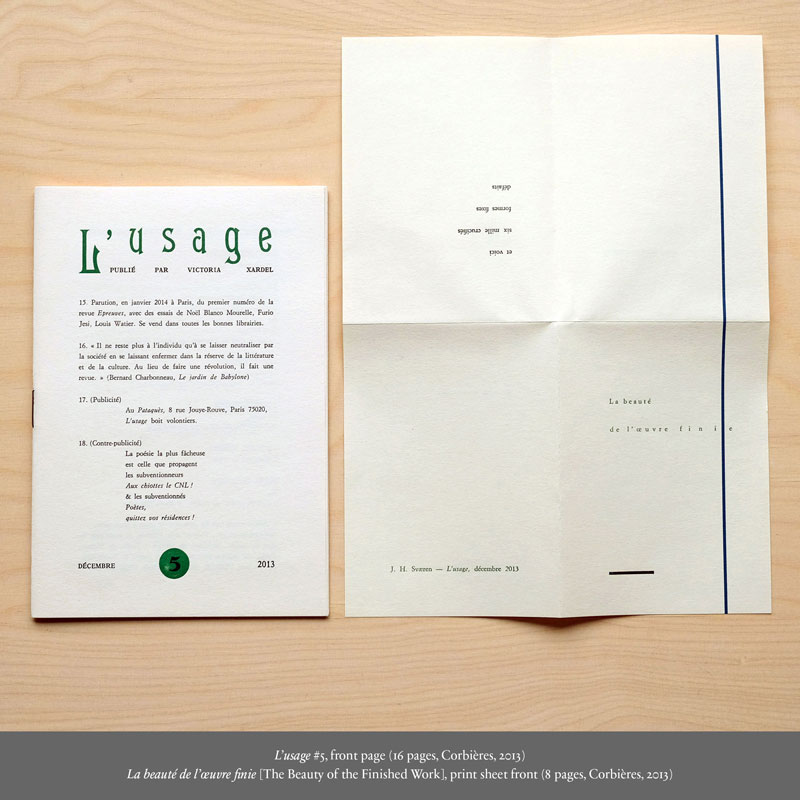
The two books for Chateaux are printed in the collection Britisk museum, an ordinary thread-sewn book, which contains the texts differently from the original editions. Something is lost, while new connections appear. A letter may shed light on a book, for example, or a few disconnected lines. […]
I republished the two books in their original form, as two sheets folded into two books, with England Forlag last year. The joint title is To bøker [Two Books], and the publication became my Christmas greeting to friends and acquaintances. I send my things by post to friends and strangers, and I often get something in return. […]
J.
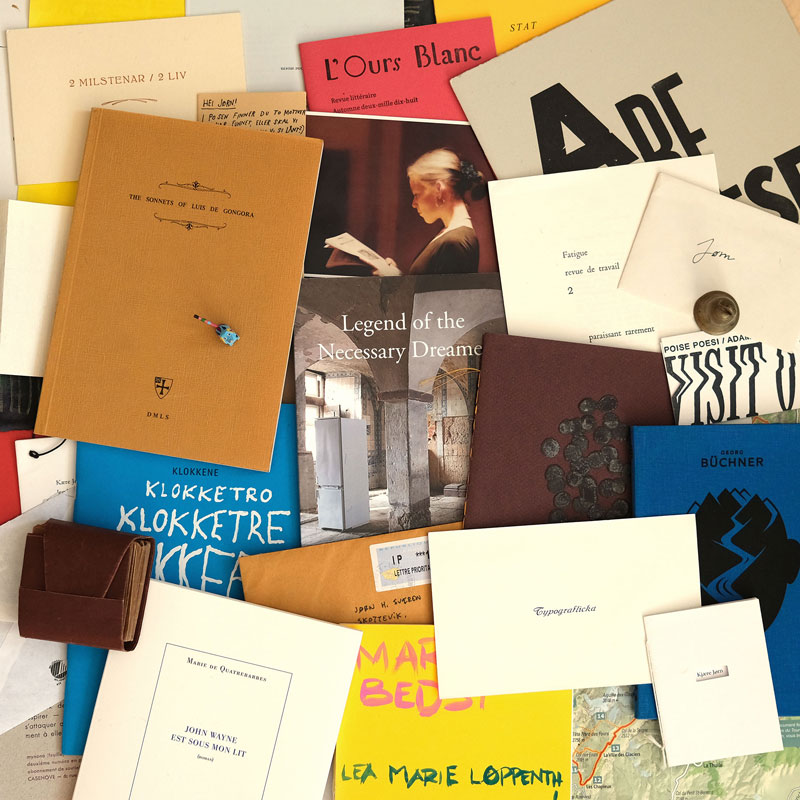
References
- London (4 pages, England Forlag, Oslo, 2009)
- Tre bøker [Three Books] (24 pages, England Forlag, Oslo, 2010)
- Pension Victoria 12 (4 pages, Venice, 2010)
- Gruppe 10 [Group 10] (224 pages, Kolon Forlag, Oslo, 2010)
- Dronning av England [Queen of England] (152 pages, Kolon Forlag, Oslo, 2011)
- Det ferdige verkets skjønnhet [The Beauty of the Finished Work] (8 pages, Turkosa serien 1, Chateaux, Stockholm, 2013)
- La beauté de l’œuvre finie [The Beauty of the Finished Work] (8 pages, trans. Jørn H. Sværen, L’usage 5, Corbières, 2013)
- Slot 9 (8 pages, Stockholm, 2015)
- Håndtak [Handle] (4 pages, England Forlag, Oslo, 2015)
- Det færdige værks skønhed [The Beauty of the Finished Work] (8 pages, trans. Andreas Vermehren Holm, Bestiarium, Forlaget Virkelig, Copenhagen, 2016)
- Queen of England (152 pages, trans. Jørn H. Sværen, Black Square Editions, New York, 2017)
- Fyra väggar [Four Walls] (8 pages, trans. Jørn H. Sværen, Turkosa serien 13, Chateaux, Stockholm, 2019)
- Klokkene [The Clocks] (24 pages, England Forlag, Oslo, 2019)
- Britisk museum [British Museum] (168 pages, Kolon Forlag, Oslo, 2020)
- To bøker [Two Books] (2 x 8 pages, England Forlag, Oslo, 2021)
Text and translation by Jørn H. Sværen. First published under the title ‘A letter from Jørn H. Sværen’ in the online journal Scrypth, 23 April 2022. Photos by Vidar M.S. Husby, except paper boat by Thomas Kvam.